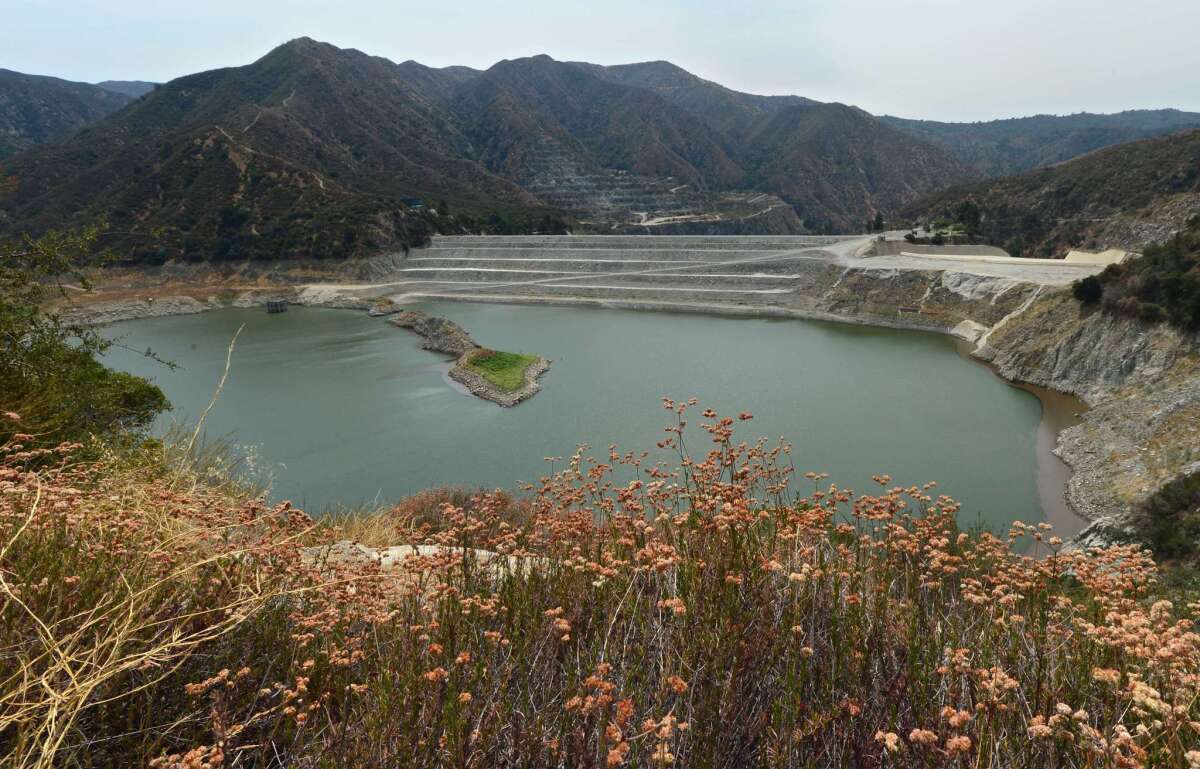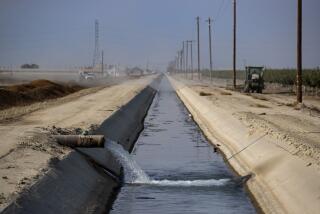Editorial: California needs to get a grip on its groundwater

It’s not just reservoirs and aqueducts that are drying up in the state’s drought. Under the ground, aquifers that store water relied on by more than three-quarters of Californians are being over-pumped, often to such an extent that the earth above them sinks. Other states regulate pumping, or require local authorities to do it, to ensure that groundwater is managed sustainably and fairly. Here, though, regulations are so spotty that neighboring farmers often drill for the same water, subject to no agreements on how it is to be divvied up and no checks on over-pumping. It is as though they’re digging for gold instead of pumping what should be a renewable and sustainably managed public resource.
The fight over groundwater is so contentious that competing interests have for decades resisted any attempt to regulate it. Gov. Jerry Brown first recommended that lawmakers pass measures managing groundwater back in the 1970s, but to no avail.
Brown called for legislation again this year as part of his comprehensive Water Action Plan, and this time, given the severity of the drought, even the wariest water-rights owners have recognized that, without change, California’s groundwater could be pumped to depletion, causing aquifers to draw their water from lakes and wetlands, which would in turn damage sensitive habitats and reduce surface water available for human use, or destroying the aquifers themselves by drawing in saltwater or contaminants.
State Sen. Fran Pavley (D-Agoura Hills) and Assemblyman Roger Dickinson (D-Sacramento) each have authored bills that would take modest but crucial steps toward providing a framework for local management of groundwater supplies. Lawmakers should consider their work — which may emerge this week in a unified bill — a priority for California.
The need for groundwater management extends to all parts of the state, but not equally. In some groundwater basins, users already carefully track how much water they withdraw and return to the aquifer, giving them a basis for agreements among themselves about how to divide what is there and when to stop pumping until rains or water transfers recharge the underground supply. Other basins have no monitoring or measurement, leaving no way to balance long-term supply of, and demand for, water. Some basins are already subject to court adjudications, and some are at least partially contaminated. Legislation should take these differences into account.
If lawmakers had taken up the governor’s proposal when he first gave it, more than 30 years ago, California would be in a better position today to weather the current drought. We should not have to wait another three decades to prepare for the future.
Follow the Opinion section on Twitter @latimesopinion
More to Read
Sign up for Essential California
The most important California stories and recommendations in your inbox every morning.
You may occasionally receive promotional content from the Los Angeles Times.










